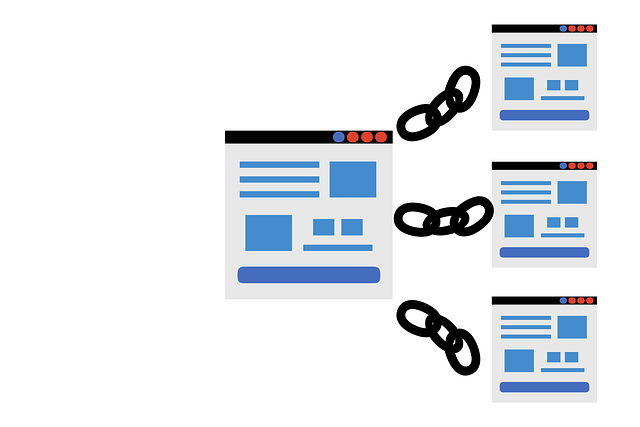How to Safely Leverage Private Blog Networks for SEO Dominance
In the competitive world of SEO, staying ahead of the curve often requires thinking outside the box. One such strategy that has gained both popularity and notoriety is the use of Private Blog Networks (PBNs). When used correctly, PBNs can be a powerful tool to dominate search engine rankings and drive massive traffic to your website. However, they come with significant risks, including the potential for Google penalties.
The key to success lies in leveraging PBNs safely and effectively. In this comprehensive guide, we’ll explore what PBNs are, how they work, and step-by-step strategies to use them without getting penalized. By the end of this article, you’ll have a clear understanding of how to safely leverage PBNs for SEO dominance.
What Are Private Blog Networks (PBNs)?
A Private Blog Network (PBN) is a collection of websites created to build backlinks to a primary website, known as the “money site.” These websites are designed to appear as independent, authoritative sites, but they are secretly controlled by the same person or entity. The goal is to manipulate search engine rankings by creating a network of high-quality backlinks.
While PBNs can be highly effective, they are considered a black-hat SEO tactic by Google. If detected, your PBN and money site could face severe penalties, including deindexing. Therefore, the key to success lies in building and managing a PBN that flies under Google’s radar.
Why Use PBNs for SEO?
Despite the risks, many SEO professionals use PBNs because of their potential benefits:
- Rapid Rankings: PBNs can help you achieve quick results by building high-quality backlinks that boost your website’s authority and rankings.
- Full Control: Unlike traditional link-building methods, PBNs give you complete control over the backlinks, anchor texts, and linking pages.
- Cost-Effective: While setting up a PBN requires an initial investment, it can be more cost-effective than continuously paying for guest posts or other link-building services.
- Targeted Traffic: By creating PBN sites in your niche, you can attract highly targeted traffic that is more likely to convert into customers or subscribers.
Risks of Using PBNs
Before diving into PBNs, it’s important to understand the risks:
- Google Penalties: Google explicitly states that PBNs violate its Webmaster Guidelines. If detected, your website could be penalized or deindexed.
- High Initial Investment: Building a PBN requires purchasing domains, hosting, and content, which can be expensive.
- Ethical Concerns: Using PBNs is considered a black-hat SEO tactic by many in the industry. If exposed, it could damage your reputation.
How to Safely Leverage PBNs for SEO Dominance
To safely leverage PBNs, you need to follow best practices that minimize the risk of detection. Here’s a step-by-step guide:
Step 1: Choose High-Quality Expired Domains
The foundation of a successful PBN is high-quality expired domains. These domains already have authority, backlinks, and traffic, making them ideal for building a PBN. Here’s how to choose the right domains:
1. Check Domain Metrics
Use tools like Ahrefs, SEMrush, or Moz to analyze domain metrics such as:
- Domain Authority (DA) and Page Authority (PA): Aim for domains with DA/PA scores of 20 or higher.
- Backlink Profile: Look for domains with a strong, diverse backlink profile from authoritative sites.
- Referring Domains: The more referring domains, the better.
2. Ensure Relevance
Choose domains that are relevant to your niche. For example, if your money site is about fitness, look for expired domains related to health, wellness, or sports.
3. Check for Penalties
Avoid domains that have been penalized by Google. Use tools like Google Search Console or SEMrush to check for manual actions or spammy backlinks.
4. Verify History
Use the Wayback Machine (archive.org) to check the domain’s history. Ensure it was previously used for legitimate purposes and not for spam or adult content.
Step 2: Diversify Hosting and IP Addresses
One of the most common ways Google detects PBNs is through shared hosting and IP addresses. To avoid this, follow these steps:
1. Use Different Hosting Providers
Host each PBN site on a different hosting provider. Avoid using popular providers like Bluehost or HostGator for multiple sites.
2. Use Unique IP Addresses
Ensure that each PBN site has a unique IP address. You can achieve this by using dedicated hosting or cloud hosting services.
3. Avoid Footprints
Don’t use the same email address, payment method, or account details for multiple hosting accounts. These small details can create footprints that Google can trace.
Step 3: Create Unique, High-Quality Content
Content is the backbone of any successful PBN. To avoid detection, each PBN site must have unique, high-quality content that appears legitimate. Here’s how to do it:
1. Hire Professional Writers
Invest in professional writers to create original, well-researched content for each PBN site. Avoid using spun or duplicate content, as this is a red flag for Google.
2. Match the Niche
Ensure the content aligns with the niche of the expired domain. For example, if the domain was previously used for a travel blog, publish travel-related articles.
3. Update Regularly
Keep your PBN sites active by regularly publishing new content. This helps them appear as legitimate, thriving websites.
4. Add Multimedia
Include images, videos, and infographics to make the content more engaging and authentic.
Step 4: Build Natural Link Profiles
A natural link profile is essential for avoiding detection. Here’s how to create one:
1. Mix Internal and External Links
Include a mix of internal links (linking to other pages on the same site) and external links (linking to authoritative, non-PBN sites).
2. Vary Anchor Texts
Use a variety of anchor texts when linking to your money site. Avoid over-optimizing with exact-match keywords.
3. Link to Non-PBN Sites
Link to high-authority, non-PBN sites to make your PBN sites appear more natural.
4. Avoid Overlinking
Don’t link every PBN site to your money site. Space out the links and ensure they are placed contextually within the content.
Step 5: Use Different Themes and Plugins
Using the same theme or plugins across multiple PBN sites can create footprints that Google can detect. Here’s how to avoid this:
1. Use Different Themes
Choose different themes for each PBN site. Avoid using free themes that are commonly used by spammers.
2. Limit Plugins
Only use essential plugins and avoid using the same set of plugins across all sites.
3. Customize Design
Customize the design of each site to make it unique. This includes logos, color schemes, and layouts.
Step 6: Implement Advanced Stealth Techniques
To further reduce the risk of detection, consider these advanced techniques:
1. Use Privacy Protection
Enable WHOIS privacy protection for all PBN domains to hide your identity.
2. Avoid Cross-Linking
Never link PBN sites to each other. This is a common mistake that can lead to detection.
3. Monitor for Penalties
Regularly check your PBN sites for signs of penalties or deindexing. Use tools like Google Search Console and Ahrefs to monitor their health.
4. Diversify Content Types
Publish different types of content, such as blog posts, product reviews, and news articles, to make your PBN sites appear more natural.
Step 7: Maintain Your PBN
Building a PBN is just the beginning. To keep it undetectable, you must maintain it properly:
1. Update Content Regularly
Keep your PBN sites active by publishing new content at least once a month.
2. Fix Broken Links
Regularly check for and fix broken links on your PBN sites.
3. Monitor Performance
Use analytics tools to track the performance of your PBN sites and make adjustments as needed.
4. Stay Updated on SEO Trends
Google’s algorithms are constantly changing. Stay updated on the latest SEO trends and adjust your PBN strategy accordingly.
Alternatives to PBNs
If the risks of building a PBN are too high for you, consider these white-hat alternatives:
- Guest Blogging: Write high-quality guest posts for authoritative websites in your niche.
- Content Marketing: Create valuable content that naturally attracts backlinks.
- Outreach Campaigns: Reach out to website owners and bloggers to request backlinks.
- Social Media Promotion: Use social media platforms to drive traffic and build brand authority.
Conclusion
Private Blog Networks (PBNs) can be a powerful tool for achieving SEO dominance, but they come with significant risks. By following the best practices outlined in this guide, you can safely leverage PBNs to boost your website’s rankings and traffic without getting penalized by Google.
Remember, PBNs are a gray-area tactic, and there’s always a risk of penalties. If you’re not comfortable with the risks, consider focusing on white-hat SEO strategies that provide sustainable, long-term growth.





